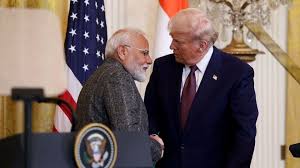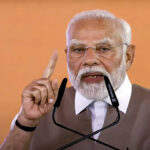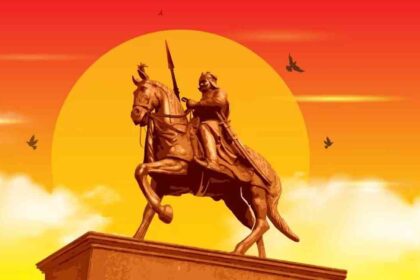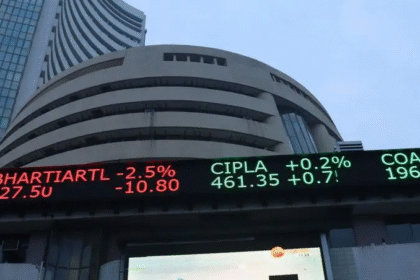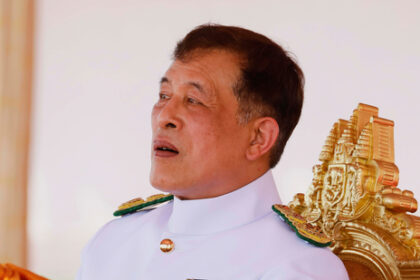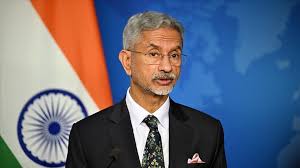Trump’s Narcissism Meets Modi’s Hubris: A Clash of Leadership Styles
The sudden chill in the India-US bilateral relationship that had promised so much at the start of the year is the result of American arrogance and Indian hubris. India cannot be relegated to a US vassal state instead of a respected partner. Matters have not been helped by the propensity of the two countries’ leaders to braggadocio and narcissism. President Donald Trump has unbounded faith in his deal-making skills. Prime Minister Narendra Modi came to believe his own hype of India as the fastest growing major economy with great power delusions.
The hefty 50% US tariffs on Indian imports are meant to correct the trade imbalance and punish India for purchase of Russian oil. India exports 18% of its goods to the US and exports worth an estimated 2% of GDP will be hit by the tariffs. At various times, Modi has embraced Trump as a ‘true’, ‘dear’ and ‘great’ friend. But tariff king Trump has no permanent personal attachments, only shifting transactional interactions in search of the next good deal for America.
Every country engages in foreign policy trade-offs between moralism and self-interest and also between competing interests. India gives priority to the energy needs of its poor over the moralism of foreigners. If not resolved, the trade tiff could damage both India’s economic and US strategic ambitions and reverse 25 years of bipartisan efforts on both sides to expand and deepen bilateral ties that can act as a counterweight to China in the Indo-Pacific.
India’s Hubris
Around 30% of India’s total oil imports is from Russia. The discounted price is a huge boon for millions of energy-poor Indians but the oil trade has fuelled anger in the West that India has been bankrolling Russia’s war on Ukraine. Yet, according to the Centre for Research on Energy and Clean Air, in July 2025, Russia’s most lucrative export markets for fossil fuels were China (€6.2 billion), India (€3.5bn), Turkey (€3.1bn) and the EU (€1.3bn). Trump’s punitive tariffs on India for the oil trade with Russia under Western sanctions are indeed “unfair, unjustified and unreasonable”, as India’s official spokesman has said.
This is so for four reasons. First, previously the US had encouraged India to keep buying Russian oil in order to stabilise the global energy market. Second and as noted, EU and NATO countries were also still buying Russian energy. Third, the US itself was importing Russian uranium hexafluoride, palladium, fertilisers and chemicals. When asked about US imports from Russia, Trump said, “I don’t know anything about it. We will have to check.” Fourth, China buys more Russian oil but unlike India, it hasn’t attracted the same high tariffs through secondary sanctions.
Chinese leaders believe they are “in a very strong position on trade with the United States” because its “ability to tolerate a trade shock is weaker than China’s”. Many Chinese believe that Trump’s relatively favourable treatment confirms Xi Jinping’s diagnosis of the US as a declining power against their own continued rise.
By contrast, India continues to drift rudderless on the tide of history instead of bending its arc to the destination of choice. It has an unmatched capacity to look an opportunity firmly in the eye, turn around and walk off resolutely in the opposite direction. In 11 years as PM, Modi has frittered away the political capital of two powerful electoral mandates on pet projects of cultural-religious nationalism while neglecting economic and governance reforms.
Instead of the required annual growth rate of 8-10%, the economy has grown at a more modest 6-6.5%, insufficient to absorb the millions of new entrants into the labour force or to anchor significant military modernisation. Modi has been engaged in a relentless campaign to make all of India Congress-mukt, weaken other opposition parties and politicise and bend the country’s institutions to his will. Had Modi devoted more attention, time and effort to policy and governance reforms and less to the pursuit of Hindutva projects and campaigning extensively in state elections, India could have been better positioned today, like China, both to disincentivise US tariffs and to weather the shocks of sudden tariffs.
Import barriers have worked to keep many Indian products internationally uncompetitive. Modi’s record is to over-promise but under-deliver. The demonetisation decision of 2016 and the loss of nerve at one minute to midnight on the Regional Comprehensive Economic Partnership (RCEP) in 2019 were acts of wilful self-harm. A visionary, bold and decisive PM would have signed RCEP and used it as a lever with which to discipline Indian manufacturing, agriculture and dairy for long-overdue structural reforms, productivity gains and improved international competitiveness. Instead, long-term gains notwithstanding, Modi took fright at the short-term economic pain and adjustment costs of integrating with the world’s most dynamic region.
Conditioned into a statist mindset, Indians bear regular witness to foreign investors being exhorted to ‘Make in India’. But investment decisions are not made on the basis of political speeches. India is a tough market to crack because of serious infrastructure deficiencies, low worker productivity, layers of byzantine regulations at all levels of government, severe labour market rigidity on hiring and firing, an extortionate bureaucratic mentality that inflicts tax terrorism regardless of whether an enterprise is profitable or flailing, an opaque and corruptible legal system plagued with delays, and an unattractive quality of life for expatriates.
In 1991, the exogenous shocks of the end of the Cold War, the discrediting of the command economy model and a balance of payments crisis forced India into desperately needed market-friendly economic reforms. In 2025, can Trump’s tariffs shock play a similar role in catalysing India into a genuine free market economy?
US Exceptionalism-based Arrogance
Modi’s timidness in implementing critical economic reforms do not excuse US high-handed behaviour that risks long-term damage to both. Exploiting US geopolitical heft and market power, Trump has ushered in ‘a new world order of tariffs’. India had offered concessions of no tariffs on industrial goods and phased drawdown of tariffs on cars and alcohol. However, owing to economic realities and political sensitivities on rural livelihoods and food security, agriculture and dairy sectors are red lines for any Indian government. India’s quest for affordable and stable fuel is also non-negotiable. To abandon the supply of Russian oil under economic and diplomatic pressure from Washington would be a betrayal of core domestic interests, morally indefensible and politically suicidal.
The downward spiral in bilateral relations has resurrected the Ugly American trope. Trump is seen to be acting like a global gauleiter, less a deal maker and more a mob boss with the classic shakedown threat of sign here, or else, fuelling anger at US bullying. Trump’s anger may reflect Western frustrations that their sanctions have failed to tame Russia. But what for Trump might be a negotiating tactic is widely seen in India, by governing and opposition parties, by officials, commentators and the people, as threats and national insults.
When told to jump, India does not ask ‘how high?’. Trump repeatedly claimed he had brokered an India-Pakistan ceasefire after their four day skirmishes in May. Pakistan stoked Trump’s ego by thanking him and nominating him for the Nobel peace prize for averting a nuclear war. India publicly rejected Trump’s boast of successful mediation. The trouble is, for Trump, this was not just a challenge to one single boast but an affront to his entire narrative of being the world’s peacemaker-in-chief.
India has a long list of legacy complaints against the US. American-made and -supplied arms have been used in war against India and killed Indian soldiers. The reverse has never happened. If India, since independence, had armed and given material and diplomatic assistance to America’s direct enemies, as the US has done with Pakistan and also China, how many American bombs would have fallen on India by now? Less than two months after the terrorist massacre of 26 Hindu tourists in Pahalgam, Asim Munir had lunch with Trump, the first ever serving Pakistani army chief who isn’t also the president to be hosted at the White House.
How would the American president, people and media have reacted to India’s prime minister hosting Osama bin Laden for lunch in November 2001?
Seven years ago, India and Russia signed a $5bn agreement for Russia’s S-400 Triumf surface-to-air missiles defence system. India ignored repeated warnings about triggering the Countering America’s Adversaries Through Sanctions Act (2017) which mandated US sanctions on entities engaged in ‘significant’ defence transactions with Russia. After the May 2025 India-Pakistan clashes, India’s air chief made a point of emphasising the Indian military’s satisfaction at the effectiveness of the S-400 Triumf air-defence system under battle conditions.
Yet, despite the legacy of arms imports from Russia, India has been redirecting purchases towards France, Israel and the US. In the five years 2020-24, the largest share of India’s imports came from Russia (36%), but this is half the share of Russian imports in 2010-14. Most of India’s new and planned orders for major arms will also come from Western suppliers.
BRICS
India has been steadily building, broadening and deepening links with the US. Over the last few years, Chinese hostility has pushed India towards the US. A modern-day Henry Kissinger would have cultivated India and Russia into a loose coalition with the US-led West against China as the one peer rival and principal future adversary. Instead, Trump’s preferred approach of engaging in simultaneous confrontations with all three will drive them closer together into a new strategic troika.
The BRICS grouping (Brazil, Russia, India, South Africa, and now also Egypt, Ethiopia, Indonesia, and the UAE) represents their ‘geopolitical and geohistorical’ voice in world affairs at a time of multipolar multilateralism. In November last year, then President-elect Trump had called BRICS ‘anti-American’ and warned it against any moves towards de-dollarisation on pain of 100 percent tariffs. On July 6, the president repeated the threat that any country aligning with BRICS in that effort would face 10% US tariffs. Republican Senator Lindsey Graham warned China, India and Brazil: “We’re going to tear the hell out of you and we’re going to crush your economy, because what you’re doing is blood money.”
Such bellicose rhetoric reconfirms the wisdom and necessity of BRICS members’ pursuit of strategic autonomy that is subservient to no one. Faced with US economic coercion, India has ostentatiously pivoted towards China, Russia and Brazil, including detailed phone talks by Modi with the Russian and Brazilian presidents and attendance at the Shanghai Cooperation Organisation summit in Tianjin. His last visit to China was in June 2018. Chinese Foreign Minister Wang Yi had a productive visit to India on August 18-19.
After five years of border tensions, China and India are making progress in rebuilding bilateral ties. The optics of the bonhomie between the leaders of Russia with its natural resource endowments, China with manufacturing might and India with services sector strengths, will underscore the uneasy relations of all three with the US. Thus, Trump’s temper tantrum efforts to coerce India and Brazil into abandoning BRICS could instead cement the group’s cohesion as the vehicle for democratising the architecture of international financial governance and accelerate the very geopolitical realignment that needles Trump.
Conclusion
On August 14, India’s foreign ministry spokesman reaffirmed that India and the US ‘share a comprehensive global strategic partnership anchored in shared interests, democratic values and robust people-to-people ties’. Trump and Modi have been careful not to criticise each other directly, suggesting both are interested in rescuing the relationship. US global sway is beyond dispute. For the sake of national dignity and long-term viability as a sovereign nation, India has to accept the short-term pain of Trump’s unilateralism. For its own economic self-interest, India needs to diversify export markets and reform agriculture.
The US in turn must address Indian complaints about demanding fealty to American sensitivity while ignoring key Indian concerns. By slowing India’s growth trajectory and hampering its military potential, US tariffs will also import tension into the Quad grouping and harm the strategic interests of Australia and Japan as well. Economically, India offers the greatest promise for alternative supply chains to cut dependence on China. Strategically, India is the best placed to help the US ring-fence China’s expanding geopolitical influence. Politically, India offers an economic-geopolitical partnership from within the democratic camp.
Also Read: Bihar Politics: Modi’s Weakening Grip and the Strategy of Outrage


